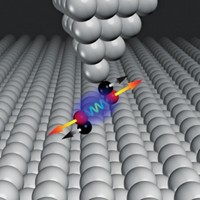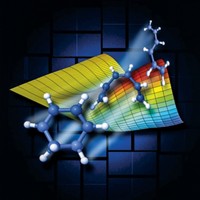Advertisement
Grab your lab coat. Let's get started
Welcome!
Welcome!
Create an account below to get 6 C&EN articles per month, receive newsletters and more - all free.
It seems this is your first time logging in online. Please enter the following information to continue.
As an ACS member you automatically get access to this site. All we need is few more details to create your reading experience.
Not you? Sign in with a different account.
Not you? Sign in with a different account.
ERROR 1
ERROR 1
ERROR 2
ERROR 2
ERROR 2
ERROR 2
ERROR 2
Password and Confirm password must match.
If you have an ACS member number, please enter it here so we can link this account to your membership. (optional)
ERROR 2
ACS values your privacy. By submitting your information, you are gaining access to C&EN and subscribing to our weekly newsletter. We use the information you provide to make your reading experience better, and we will never sell your data to third party members.
Synthesis
Better View Of Solid-State Reactions
Using nanocrystals suspended in water, researchers probe the properties solid-state organic reactions using solution spectroscopy techniques
by Elizabeth K. Wilson
January 4, 2010
| A version of this story appeared in
Volume 88, Issue 1

Light-driven solid-state organic reactions, while potentially useful for environmentally clean industrial processes, are difficult to probe spectroscopically in fine powders or in single crystals because of high optical densities and light scattering. An international team that includes Malcolm D. E. Forbes of the University of North Carolina, Chapel Hill; Miguel A. Garcia-Garibay of the University of California, Los Angeles; and Valery F. Tarasov of the Semenov Institute of Chemical Physics, in Moscow, has turned to nanocrystals suspended in water as a system that maintains the properties of bulk solids but enables examination by solution techniques (J. Am. Chem. Soc., DOI: 10.1021/ja909521u). The researchers studied the UV-induced conversion of dicumyl ketone to dicumene as a model system for synthesizing molecules with adjacent quaternary carbons. Laser flash photolysis of the ketone produced a nanocrystalline radical-pair triplet state, which the group observed transforming into dicumene by using time-resolved electron paramagnetic resonance spectroscopy. The work sets the stage for new depth of understanding and manipulation of organic solid-state reactions, the researchers say.





Join the conversation
Contact the reporter
Submit a Letter to the Editor for publication
Engage with us on Twitter